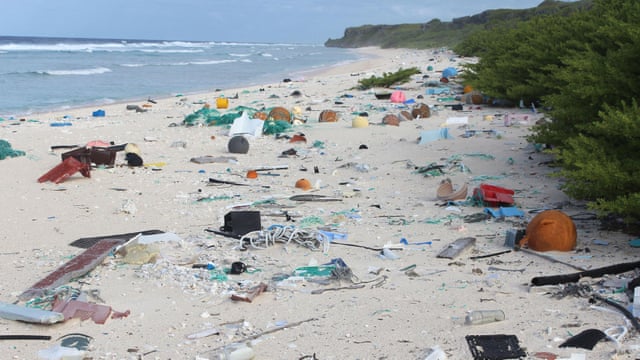Inaccessible island is well named. It is an uninhabited rock in the South Atlantic ocean that belongs to Tristan da Cunha,
伊纳克塞瑟布尔岛,这个名字起得很好。这是一座位于南大西洋的杳无人烟的岛屿,
a British dependency which itself vies with Easter Island for the honour of being the most remote inhabited place on the planet.
地属英国海外领地的特里斯坦-达库尼亚群岛。该岛屿在与复活节岛争夺地球上最偏远最无人烟之地的荣誉。
Go there, though, and you will find its coast is covered with litter.
但去那里,你会发现其海岸到处都是垃圾。
That, at least, has been the experience of Peter Ryan of the University of Cape Town, in South Africa.
至少这是南非开普敦大学的皮特·瑞恩的经历。
Since 1984 Dr Ryan, an ornithologist, has been visiting Inaccessible and, along with his other studies,
自1984年以来,鸟类学家瑞恩博士一直拜访伊纳克塞瑟布尔岛,结合他的其他研究,
recording the litter stranded on the island's beaches.
记录下了搁浅在这座岛屿海滩上的垃圾。
This week, in the Proceedings of the National Academy of Sciences, he has published the results.
本周,他在《Proceedings of the National Academy of Sciences》上发表了自己的成果。

Though Inaccessible is indeed remote, being near the South Atlantic's midpoint,
虽然伊纳克塞瑟布尔岛确实很偏远,临近南大西洋的中心,
the nature of oceanic circulation means that this is exactly the sort of place where floating rubbish tends to accumulate—
但海洋环流的性质意味着这里正是漂浮垃圾易于堆积的地方—
at the centre of whirlpools thousands of kilometres across, called gyres.
在直径数千公里的漩涡中心,即环流圈。
Dr Ryan's particular interest was where all the litter came from before it was swept into the gyre.
让瑞恩特别感兴趣的是,在被卷入环流圈前,所有这些垃圾都是来自何处。
And he found that this has changed a lot over the decades he has been visiting the island.
并且他发现在过去的几十年里,情况已经发生了很大的变化。
To impose some order on the question, he and his colleagues focused on one particular class of litter: bottles.
为了给这个问题设定一些规则,他和他的同事专注于某一些类型的垃圾:瓶子。
Their definition of a bottle included jars and aerosol containers, and encompassed things made of metal, glass or polymer.
他们对瓶子的定义包括罐子和喷雾剂容器以及金属、玻璃或聚合物制品。
Most, though, were of polyethylene terephthalate, a light plastic, and had once held drinks.
不过大部分都是聚对苯二甲酸乙二醇酯,一种轻巧的塑料且曾用来装过饮料。
译文由可可原创,仅供学习交流使用,未经许可请勿转载。



